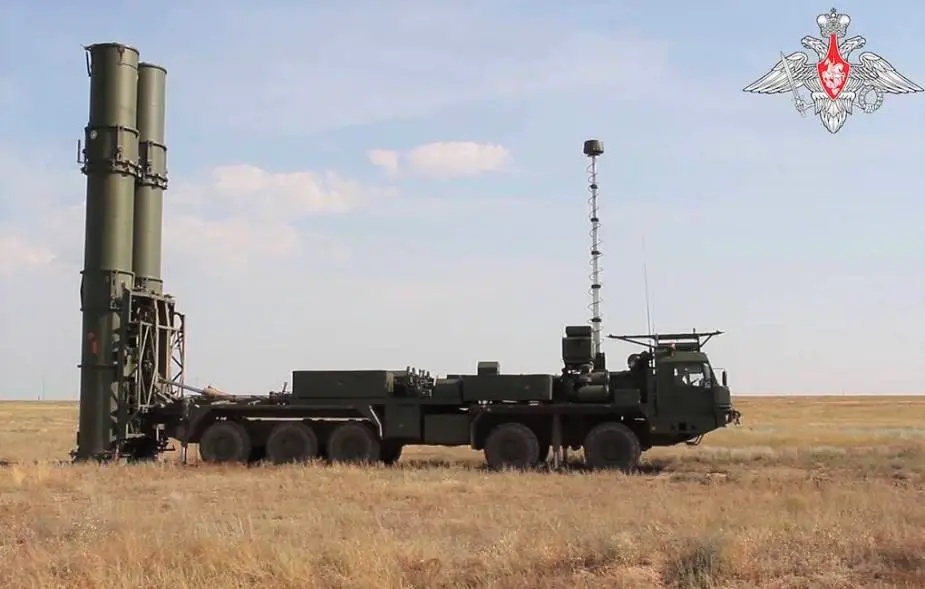MOSCOW, April 25. /TASS-DEFENSE/. Almaz-Antey Concern has launched batch production of S-500 air defense systems, CEO Yan Novikov said: “Batch production of S-500 has been launched with the use of the latest achievements of domestic science and technology”, he told the National Defense journal and stressed the combat parameters of the new weapon considerably exceed the previous air defense systems. “S-500 can become the backbone of the aerospace defense. The launchers will be delivered in the time stipulated by the arms procurement order,” Novikov said but did not elaborate.
Follow Army Recognition on Google News at this link

S-500 Prometey (Prometheus) air defense/anti-ballistic missile system (Picture source: Russian MoD)
The S-500 Prometey (Prometheus), also known as 55R6M "Triumfator-M", is a surface-to-air missile/anti-ballistic missile system intended to replace the A-135 missile system currently in use, and supplement the S-400. The S-500 was developed by the Almaz-Antey Air Defence Concern. Initially planned to be in production by 2014, finally first delivered in 2021. The S-500 will be integrated into a single network of aerospace defense assets.
The S-500 is designed for intercepting and destroying intercontinental ballistic missiles, as well as hypersonic cruise missiles and aircraft, for air defense against Airborne Early Warning and Control and for jamming aircraft. With a planned range of 600 km (370 mi) for anti-ballistic missiles (ABM) and 500 km (310 mi) for air defense, the S-500 would be able to detect and simultaneously engage up to 10 ballistic hypersonic targets flying at a speed of 5 kilometers per second (3.1 mi/s) to a limit of 7 km/s (4.3 mi/s). It also aims at destroying hypersonic cruise missiles and other aerial targets at speeds higher than Mach 5, as well as spacecraft.[citation needed] The altitude of a target engaged can be as high as 180–200 km (110–120 mi).[citation needed] It is effective against ballistic missiles with a launch range of 3,500 km (2,200 mi), the radar reaches a radius of 3,000 km (1,300 km for the EPR 0,1 square meter). Other targets it has been announced to defend against include: unmanned aerial vehicles, low Earth orbit satellites, and space weapons launched from hypersonic aircraft, and hypersonic orbital platforms.
The system will be mobile and will have rapid deployability. Experts believe that the system's capabilities can affect enemy intercontinental ballistic missiles at the middle and end portions of the flight, but reports by Almaz-Antey say that the external target-designation system (RLS Voronezh-DM and missile defense system A-135 radar Don-2N) will be capable of mid-early flight portion interceptions of enemy ballistic missiles, which is one of the final stages of the S-500 project. It is to have a response time of less than 4 seconds (compared to the S-400's less than 10).
The S-500 will consist of:
* 77P6 launch vehicle, based on the BAZ-69096 10x10 truck
* 55K6MA and 85Zh6-2 command posts, based on BAZ-69092-12 6x6
* 91N6A(M) acquisition and battle management radar, a modification of the 91N6 (Big Bird) towed by the BAZ-6403.01 8x8 tractor
* 96L6-TsP acquisition radar, an upgraded version of the 96L6 (Cheese Board) on BAZ-69096 10x10
* 76T6 multimode engagement radar on BAZ-6909-022 8x8
* 77T6 ABM engagement radar on BAZ-69096 10x10
The type of missiles used, especially for the long-range ABM/ATBM role, has not been disclosed yet. It is likely to be a derivative of the SA-12B Giant two-stage ATBM, since the 77P6 launch vehicle is originally meant to carry 2 containers for the SA-12B. The other missiles, to be used against classical airborne targets, are likely to be the same as in the S-400 system.















